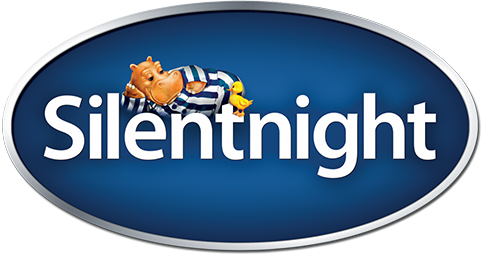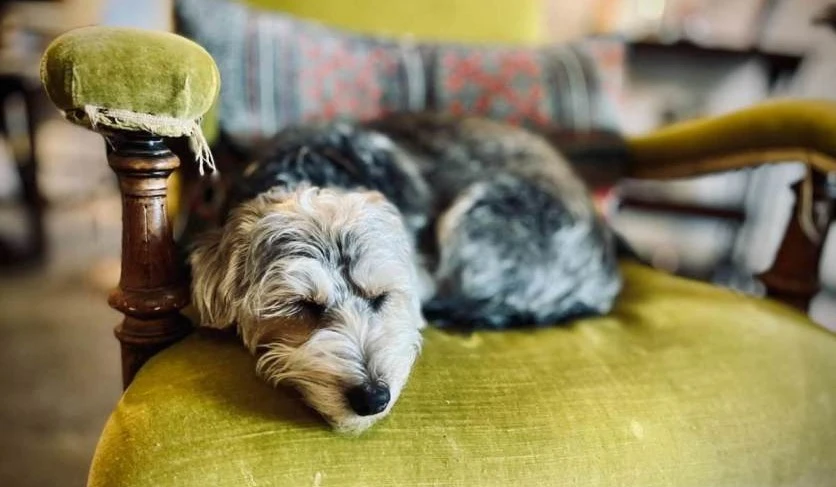
fascinating sleep facts about dogs
Dogs love a good snooze, whether curled up in their bed, or yours! Just like us, dogs need plenty of sleep to allow their body to recharge and repair. But, did you know a dog’s sleep cycle mimics a humans and that they can even suffer from sleep disorders too? They also have a special eyelid that’s used for sleeping and can see much better in the dark compared to us. We’ve rounded up some fascinating sleep facts about dogs, so if you’ve ever wondered if you’re canine friend dreams and why they sometimes sleep with their eyes open, then keep on reading to find out the answers to these questions and more.
How many hours do dogs sleep in a day?
Dogs require a lot of sleep, even more than what we do. However, the amount of sleep a dog needs all depends on their age, health and lifestyle. Age is the most important factor when it comes to the total amount of sleep a dog needs and has the biggest impact on their sleep schedule. On average, an adult dog will sleep for 12-14 hours a day. Puppies on the other hand, sleep for even longer and can spend between 18-20 hours a day sleeping. A puppy sleeps for longer, as their body is growing and their mind is learning lots of new things. They have bursts of sleep during the day, rather than one long sleep session.
Dogs spend so much time in the land of nod because their bodies do the same thing as ours when we’re sleeping, which is repairing and recharging ready for the next day’s adventures. The older a dog gets, the more time they will need to repair and recharge, which also leads to more daytime naps.
A dog’s sleep cycle almost mimics a humans
Sometimes you may think, is my dog ever fully asleep? In actual fact, a dog’s sleep cycle is nearly identical to a humans. Like us, they go through three phases during NREM sleep and also experience REM sleep, but their cycle is a lot shorter than ours, where we go through an average of five cycles a night, a dog can go through 15-20 cycles.
During the first phase of NREM sleep, a dog’s muscles will relax, which explains why you may sometimes see them twitch, this is classed as light sleep, as they can easily be awakened. In the second phase, they will be relaxed and calm and phase three is when their heart rate, blood pressure and body temperature decreases and breathing slows down. During the third phase, you may find that your dog does not react to noises or anything that’s going on around them.
Do dogs dream?
As we just explained, dogs do experience REM sleep, which means they dream in pretty much the same way we do. Dogs enter periods of REM sleep - this is when the brain is at its most active and is busy processing memories and learning. A dog will spend around 10-15% of their sleep cycle in this phase, but a puppy will spend longer as they are going through stages of development. The signs to look out for so you know your dog is dreaming, include a whimper or growl, leg movements, twitching eyelids and a sudden spasm or shivering.
Dog sleep positions tell you a lot
Whether a back sleeper, side sleeper or curled up in a ball, the position a dog sleeps in can tell you a lot about their mood. Here’s some common positions dogs sleep in and what they mean:
Back sleeper - if your dog is asleep on their back, paws up in the air and belly exposed, this is a sign that they feel safe and comfortable. And as there’s less hair on their belly, it allows for heat to escape, helping them to cool off.
Side sleeper - a dog sleeping on its side also indicates they are feeling relaxed and comfortable. It’s a sign of trust too and a dog will often enter REM sleep and dream in this position.
Curled up - taking a snooze tightly curled up in a ball means your dog is conserving warmth and is a way of making themselves feel safe and protected. If your dog likes to sleep mainly in this position, they will naturally like a calming donut pet bed, allowing them to curl up and feel snug and comfy.
Dogs have a third eyelid
Dogs have a third eyelid, called the nictitating membrane, which is a pinkish tissue located in the lower corner of the eye. This third eyelid covers a dog’s eye, keeping it moist as they sleep, and is only capable of blinking when the eyes are closed and will retract when open.
Sometimes it may seem your dog is sleeping with their eyes open, which can look a little weird, but in actual fact, it’s the nictitating membrane you’re seeing. This membrane also serves to remove debris from your dog’s eyes, helping to protect from any injuries.
Dogs can experience sleep disorders
Just like us, dogs can experience sleep disorders, including narcolepsy, REM sleep behaviour disorder and obstructive sleep apnea. Breeds most likely to experience narcolepsy include poodles, labradors, doberman pinschers and dachshunds, while obstructive sleep apnea affects dogs with extremely short muzzles, such as bulldogs. With REM sleep behaviour disorder, it causes abnormal movements during REM sleep, such as howling or barking, chewing or biting and violent movement of the limbs.
Can dogs see in the dark?
Dogs can see much better in the dark than us. This is all thanks to a membrane called the tapetum lucidum, located along the back of the eyes, which reflects even the smallest amount of light into the retina, boosting their night vision. Dogs also have more rods in their eyes, allowing them to see the difference between light and shadow. So, there’s no need to worry about your dog bumping into anything if they wake up in the middle of the night wanting to investigate that strange noise or needing a toilet break.
Let sleeping dogs lie
The old saying, ‘let sleeping dogs lie’, means to avoid interfering in a situation that is causing no problems, but very well may do if you interfere in any way. It derives from the long-standing observation that a dog can be unpredictable if woken up suddenly. Abruptly waking your dog can have a negative effect in that they could bite or nip, so as the saying goes, let your sleeping dog lie.





